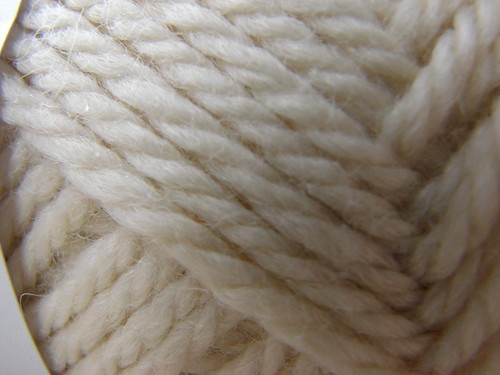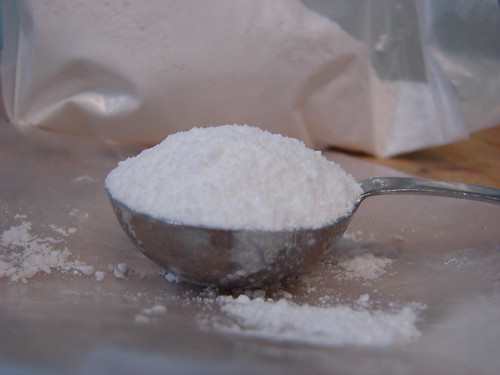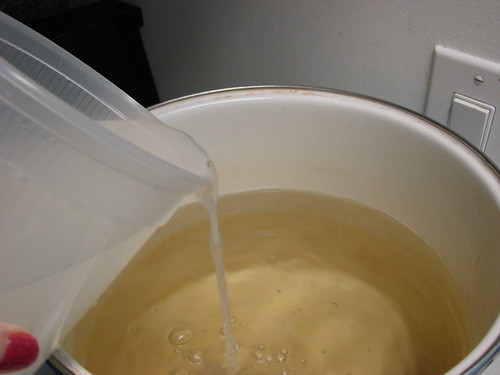I wasn't in the market for being on the 5 year waiting list, but I did notice that he had bags of brazilwood shavings for sale as a by-product. You can get some really nice reds from brazilwood in the dyepot.
Here is my chosen victim:

I had seven skeins of Rowan Purelife British Breeds in Blue Face Leicester in boring white. It's a nice round 3-ply chunky yarn. I am planning on making the Owl Sweater with it, but I didn't want a white one. BFL is a good candidate for natural dyes since it is a longwool and it doesn't felt easily. There is a lot of rinsing and moving the yarn around during this process and I find it soothing to use a wool that I don't have to obsessively worry about destroying.

I wound the balls of yarn onto my swift. It's faster to spin that sucker around then use a niddy noddy.

Once I had all seven skeins done, I put big lose ties on them in four places to keep it from tangling. Natural dying involves a lot of steps and moving the yarn around, so it's best to put a lot of ties on the skeins to avoid a mass of tangles. I threw the yarn in a warm soapy water bath. This is important- any dirt or oils from your hands or mill machines will make the dye take up unevenly. Getting the yarn wet will also help with dye intake- it will take up the mordant and dye more evenly if the yarn is soaked through.
While the yarn is soaking, I mix up the mordant. I use Alum, which is also used as pickling salts, so it's fairly non-toxic. I use a lot of precautions as I dye in my kitchen (and I use said kitchen to cook quite a bit) so I use the least toxic chemicals I can find. The mordant allows natural dyes to attain some degree of washfastness. If you don't use a mordant, the color will just wash out and end up all over your hands and clothes as you work with it. A mordant remains in the fiber permanently, holding the dye. It also effects the final color outcome.

I also added some cream of tartar. This will brighten shades and soften the yarn. I go by the rule of thumb of 4 oz of mordant to 1lb of goods, and 1 oz of C of T. If you use too much mordant, it will make the fiber brittle.
Dissolve the mordant and C of T in some warm water, and then add is to a larger pot of water.

Rise the soap out of the yarn and add it to the mordant pot. Then slowly, and carefully, bring the pot to a gentle simmer. Hold it at the simmer for an hour and occasionally rotate the yarn (don't stir, or you'll end up with a felted mass).
Once the hour is up, cut the heat and let the yarn cool down to room temperature. Take the yarn out and rinse it at the same temperature. I then put mine in plastic bins to keep it damp since it takes overnight to make the dye stock.
Up next: making the Oh So Pretty colors.
No comments:
Post a Comment